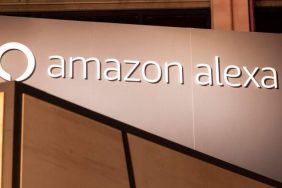Photo: Carl Court (Getty Images)
After 20 years of bulking up like a gorilla on steroids, Amazon has become one of the most ubiquitous companies on earth. With Jeff Bezos‘ brainchild dominating so much consumer space today, they are now turning their attention to the markets of tomorrow.
Alexa Baby Stats is a handy way for parents to keep track of their newborn kid: from feedings and naps to poops and more, it’s a modern way to keep tabs on your life. This month the company introduced the baby activity skills API, an artificially intelligent stenographer that records your every utterance and stores the data forever.
And while an activity tracking system can be useful for sleep-deprived parents or forgetful fathers, a byproduct of this (that many consumers are overlooking) is that Amazon will now have an ungodly wealth of data on the next gen of shoppers.
Imagine a world where you’re born alongside an artificially intelligent nanny who slowly learns everything about you: how you like your toast, how much you poo, whether or not you floss — essentially mapping your entire lifestyle, from habits and desires to everything you do and don’t like.
For the coming generation, this will likely be considered a normal thing. And Amazon looks primed to be there every step of the way, collecting stats on you in-utero and carrying on mining the data of your every move until you buy your last pair of socks.
While the technology is brand new, the system will rapidly improve as advancements are made and usage increases. Something to note: You can only use the API if you already allow Amazon to store your customer data and identifiers — because you’re not a viable segment of the population unless you shop at Amazon.
Remember when Amazon was just a bookstore? Neither do we. Here are eight key moments in the company’s growth from fledgling start-up to e-commerce mega giant.
Take a seat: These Techy Toilets Are The Flush of the Future
Take a ride on the wild side: Bug Out in the New Volkswagen Electric Dune Buggy
Amazon For Babies Milestones
-
1995: Amazon Sells Its First Book

On July 16, Amazon made history by fulfilling its very first order: a scientific psychology book titled Fluid Concepts and Creative Analogies: Computer Models of the Fundamental Mechanisms of Thought. The title is quite a mouthful and a sign of the gigantic future that would await the young startup.
-
1997-2000: Going Public

In May of 1997, the company went public at $18 a share. The following year they expanded their store to offer music, movies, software, and games. Then, in 2000, they opened up their site to third-party vendors. This outward expansion became the foundation of Amazon's business practices.
-
2005: Amazon Goes Prime

With a solid identity and consumer awareness, Amazon introduced its membership service. For $79 per year, Prime could get you two-day shipping and that shopper's high that comes special with a dirt cheap exclusive offer. Amazon Prime members are expected to number 64 million in 2019.
-
2009: Amazon Buys Zappos

A serious foray into shoes and clothing sales began in earnest nearly 15 years after the company started doing business. It looked like the e-commerce juggernaut might finally turn a profit. Now the clothing market accounts for a pretty nice chunk of Amazon pocket change (40 billion to be exact).
-
2015: Amazon Comes To Hollywood

It's strange to think that just a few years ago, Amazon had no offerings in the streaming services department. Now they have their own platform with a huge library of licensed content and a world-class production studio attracting some of the top talent in the industry. Having quickly nabbed more than a third of the streaming market share, nearly everyone has at least one eyeball on Amazon.
-
2017: Amazon Buys Whole Foods

Pretty soon Amazon could own all the world's water, after their odd, yet savvy takeover of health food staple, Whole Foods. Investing in brick-and-mortar seemed a step backward for the online retail giant, but the purchase gave them a solid foothold in the grocery game. A month later they had cornered the oat milk market! What next?
-
2018: Amazon Acquires A Fleet

Delivery is a huge part of the formula. Amazon has distribution centers all across the nation and has been steadily working to economize its delivery system. Since adding 20,000 new vehicles to their fleet, little white vans have been dominating the delivery scene from Los Angeles to Bangor.
-
2018: Ties With Security Agencies

Facial recognition technology is the wave of the future, but when it came out that the e-tailer had been working with U.S. security agencies - who acted as a buyer for their wares - things got a little sketchy. Investors didn't like their company helping ICE deport innocent immigrants, and in January 2019, they filed a motion to severely limit Amazon from continuing to sell its Rekognition tech to government agencies.
But how good is the technology? Does Amazon even recognize Big Brother's face when they look in the mirror? Only time will tell if we recognize it ourselves.









